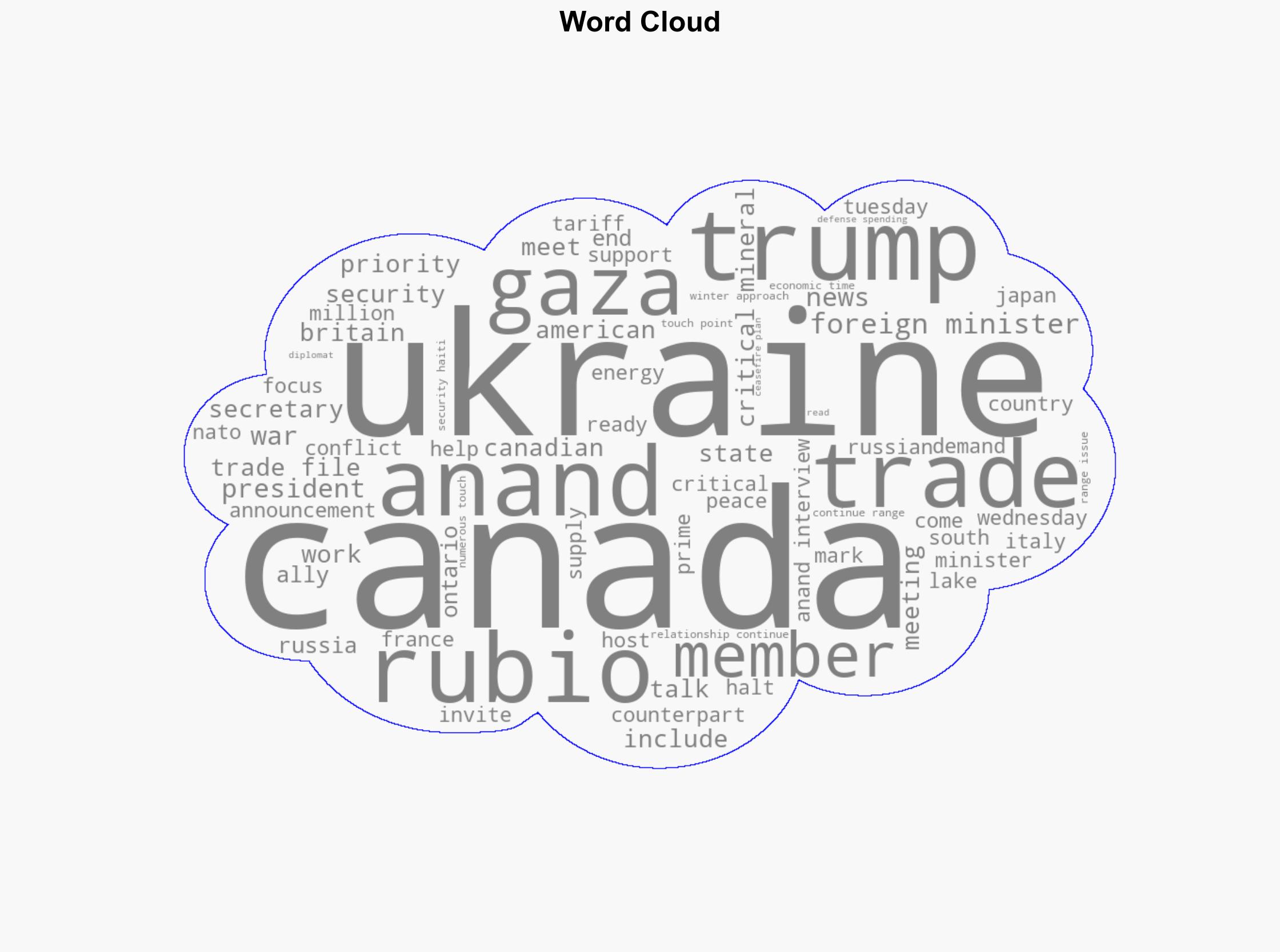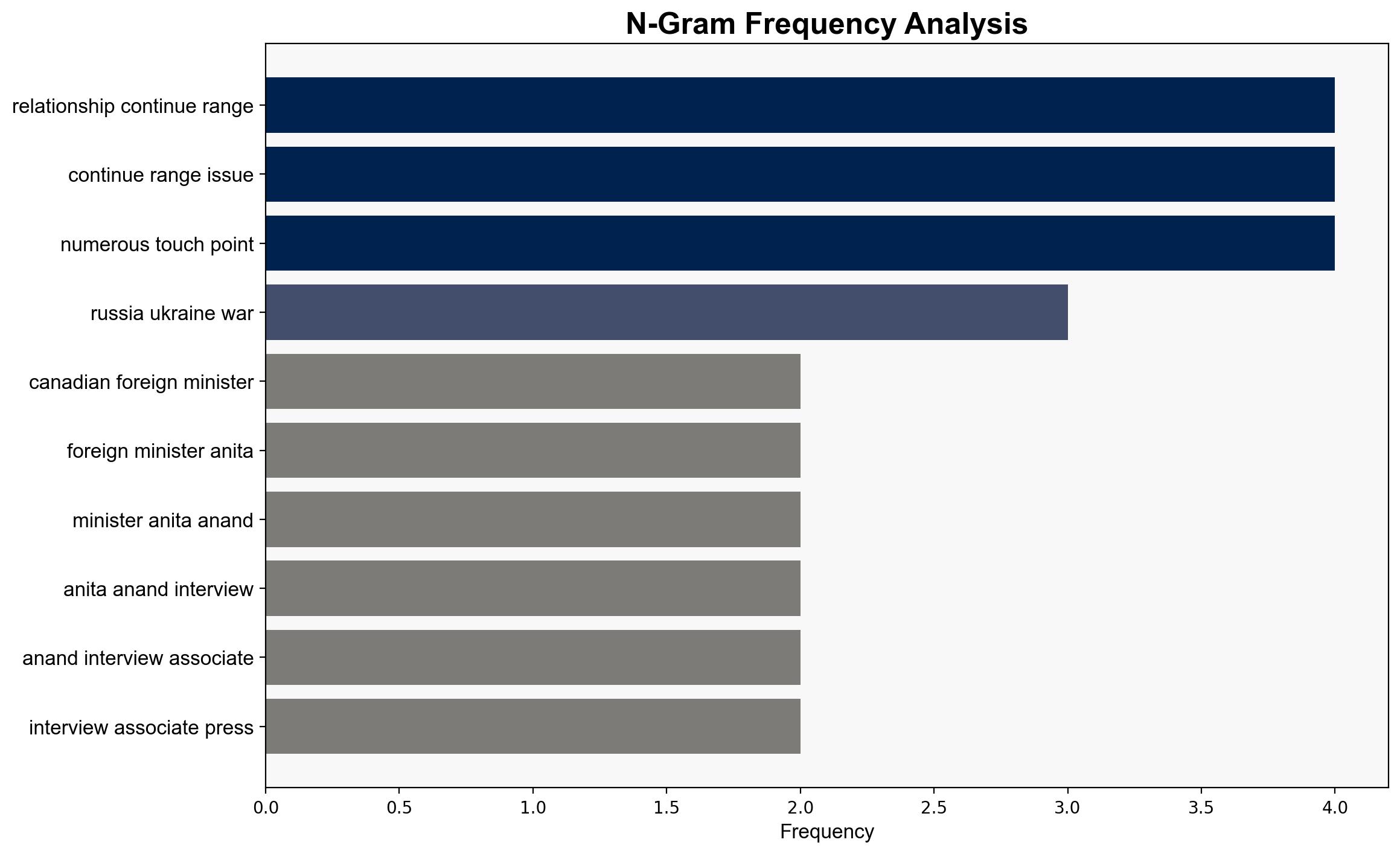Top diplomats from G7 countries meet in Canada as trade tensions rise with Trump – Japan Today
Published on: 2025-11-12
AI-powered OSINT brief from verified open sources. Automated NLP signal extraction with human verification. See our Methodology and Why WorldWideWatchers.
Intelligence Report: Top diplomats from G7 countries meet in Canada as trade tensions rise with Trump – Japan Today
1. BLUF (Bottom Line Up Front)
With a moderate confidence level, the most supported hypothesis is that the G7 meeting in Canada aims to consolidate a unified stance on trade and security issues amidst rising tensions with the U.S. under President Trump. Strategic recommendations include strengthening multilateral trade agreements and enhancing diplomatic channels to manage U.S. relations.
2. Competing Hypotheses
Hypothesis 1: The G7 meeting is primarily focused on addressing trade tensions with the U.S. and reinforcing multilateral trade agreements to counteract unilateral U.S. policies.
Hypothesis 2: The meeting is more focused on global security issues, such as the Russia-Ukraine conflict and Middle East peace, with trade tensions being a secondary concern.
Hypothesis 1 is more likely given the context of recent U.S. tariffs and demands on defense spending, which have strained relations with traditional allies. The inclusion of non-G7 countries suggests a broader coalition-building effort against U.S. trade policies.
3. Key Assumptions and Red Flags
Assumptions include the belief that G7 countries are unified in their opposition to U.S. trade policies and that they possess the capability to influence U.S. decisions through collective action. A red flag is the potential for internal divisions within the G7, particularly regarding defense spending and recognition of Palestinian statehood, which could undermine a unified stance.
4. Implications and Strategic Risks
The primary risk is the potential escalation of trade wars, leading to economic instability. Politically, failure to present a unified front could weaken the G7’s influence. Cyber and informational threats could emerge as adversaries exploit divisions. Economically, prolonged tensions could disrupt global supply chains, particularly in critical minerals.
5. Recommendations and Outlook
- Strengthen multilateral trade agreements to reduce reliance on U.S. markets.
- Enhance diplomatic engagement with the U.S. to address specific grievances and seek common ground.
- Best-case scenario: Successful negotiation of trade terms leads to reduced tensions and strengthened alliances.
- Worst-case scenario: Escalation of trade disputes results in significant economic fallout and weakened alliances.
- Most-likely scenario: Continued diplomatic efforts lead to incremental improvements in trade relations, but underlying tensions persist.
6. Key Individuals and Entities
Anita Anand, Marco Rubio, Yvette Cooper, Vladimir Putin, Mark Carney.
7. Thematic Tags
Regional Focus: North America, Europe, Middle East
Structured Analytic Techniques Applied
- Causal Layered Analysis (CLA): Analyze events across surface happenings, systems, worldviews, and myths.
- Cross-Impact Simulation: Model ripple effects across neighboring states, conflicts, or economic dependencies.
- Scenario Generation: Explore divergent futures under varying assumptions to identify plausible paths.
Explore more:
Regional Focus Briefs ·
Daily Summary ·
Methodology





